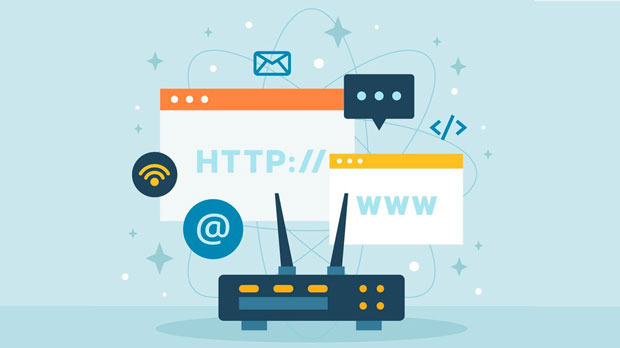Using proxy sites to access social media accounts has become a common practice in various regions where internet access is restricted or heavily monitored. However, the question arises: Do unblocked proxy sites have an impact on logging into social media accounts? In this article, we will explore the various aspects of using unblocked proxy sites, including their potential impact on user experience, security, and the social media platform’s authentication processes. Additionally, we will analyze whether these proxies are safe and reliable and how they may influence your social media activities. What Are Unblocked Proxy Sites?Unblocked proxy sites are online tools that allow users to bypass network restrictions and access websites or services that are otherwise unavailable in certain geographical regions. These sites work by masking the user’s IP address, making it appear as if the user is accessing the internet from a different location. This allows individuals in countries with restricted access to social media platforms to use them without facing censorship or regional limitations. While this service is useful for accessing content, its use has implications for security, user identity, and even social media login processes. Proxy sites are typically classified as either “blocked” or “unblocked” based on their ability to evade filters and restrictions, and users often look for unblocked proxies to ensure they can access their desired content without issues.Impact on Social Media Account LoginWhen accessing social media accounts through an unblocked proxy site, several factors could affect the login process. Here are the key elements to consider:1. Location-Based AuthenticationMany social media platforms use location-based authentication as an extra layer of security. This typically means that if a user logs into their account from a different country or IP address, the platform may flag the login as suspicious and require additional verification, such as two-factor authentication (2FA). Unblocked proxy sites can often lead to the appearance of a login attempt from an unfamiliar location, which could trigger security protocols like CAPTCHA, additional login attempts, or even temporary account suspensions. Social media platforms, such as Facebook, Instagram, and Twitter, have advanced algorithms that detect IP changes, especially when they are geographically distant from your usual login location. These platforms aim to protect accounts from unauthorized access, and using an unblocked proxy can cause extra hurdles in verifying your identity.2. Risk of Account Suspension or LockingAnother potential impact of using an unblocked proxy site to access social media accounts is the risk of account suspension or locking. If the platform detects unusual login activity — such as a sudden change in the location or an IP address that is commonly associated with proxies — it may automatically lock the account for security reasons.For users who rely on proxies to maintain anonymity or access region-restricted content, this can be frustrating, as it may lead to temporary loss of access to accounts, especially if additional steps are required to unlock the account. Depending on the platform’s policies, repeated suspicious logins can result in permanent bans or long-term access restrictions.3. Vulnerability to Malware and Phishing AttacksUsing unblocked proxy sites to access social media accounts could expose users to security risks. Proxy services can sometimes be compromised, especially if they are free or from unreliable sources. These proxies can serve as a gateway for malware, spyware, or phishing attempts, putting personal data, passwords, and other sensitive information at risk.Hackers can use unblocked proxies to disguise their activities, making it difficult to trace them. As a result, social media accounts accessed through insecure proxy sites are at higher risk of being targeted by cybercriminals. This can lead to unauthorized access to your account, account hijacking, or the leakage of personal data.4. Slower Connection and Delayed Login TimesAnother issue with unblocked proxy sites is that they can slow down your internet connection. When accessing social media accounts through these proxies, the connection is routed through another server, often far from your geographical location. This can result in longer loading times, slower page responsiveness, and in some cases, failed login attempts due to timeouts or server issues.For social media users who rely on a fast and efficient login process, using an unblocked proxy could introduce delays that affect their overall experience. In addition to slow logins, users may face issues when uploading media, loading feeds, or even experiencing interruptions in real-time interactions such as video streaming or messaging.5. Decreased Reliability of Accounts and ServicesThe reliability of services, including social media platforms, may be compromised when users log in through unblocked proxy sites. These sites often function inconsistently, depending on the server's location, bandwidth, and capacity. Social media platforms, which are built to ensure consistent user experiences, may not always provide the same quality of service when accessed through a proxy server.Inconsistent connectivity, server downtimes, or frequent IP changes can lead to service interruptions, problems with logging in, or accessing important content. Furthermore, some platforms may detect repeated use of proxies and limit account functionalities, impacting how well users can access their accounts or perform specific actions like posting, commenting, or even sending messages.Benefits of Using Unblocked Proxy SitesDespite the potential risks, unblocked proxy sites do offer some benefits, especially for users in regions where social media is restricted or blocked. These sites allow individuals to bypass censorship, access blocked platforms, and protect their anonymity online. For those in politically sensitive areas or places with stringent internet regulations, unblocked proxies provide a crucial way to access and communicate through social media.Additionally, proxy sites are often used to prevent the tracking of personal information by hiding the user's IP address, offering more privacy and security when browsing social media or engaging in other online activities. Users concerned about their digital footprint may choose unblocked proxy sites for this added layer of privacy, even if they face the potential risks mentioned earlier.How to Mitigate the RisksTo mitigate the risks associated with using unblocked proxy sites for social media logins, users can take several precautionary measures:1. Use Trusted Proxy Services: Ensure that you are using reputable and secure proxy services. Look for those that encrypt your data and offer protection against malware and phishing attempts.2. Enable Two-Factor Authentication (2FA): Use two-factor authentication on your social media accounts to provide an extra layer of protection. This will help secure your account even if a suspicious login attempt occurs.3. Limit Proxy Use: Use proxies only when absolutely necessary and avoid logging in through proxies on a regular basis. When not using the proxy, ensure that you are logging in from a consistent and trusted IP address.4. Monitor Account Activity: Regularly monitor your social media accounts for any suspicious activity or unauthorized logins. Many platforms provide activity logs where users can review login attempts and take action if something seems unusual.ConclusionIn conclusion, using unblocked proxy sites to log into social media accounts does come with certain risks, including triggering security alerts, risking account suspension, and exposing accounts to malware and phishing. While these sites provide an essential service for users in restricted regions, they also have a significant impact on the login process, account reliability, and overall user experience.By understanding these risks and implementing appropriate security measures, users can minimize the potential downsides of using unblocked proxies. For those who prioritize privacy and need to bypass restrictions, proxies can still serve as a valuable tool, but caution is advised to avoid unnecessary complications.
Jul 08, 2025



































































